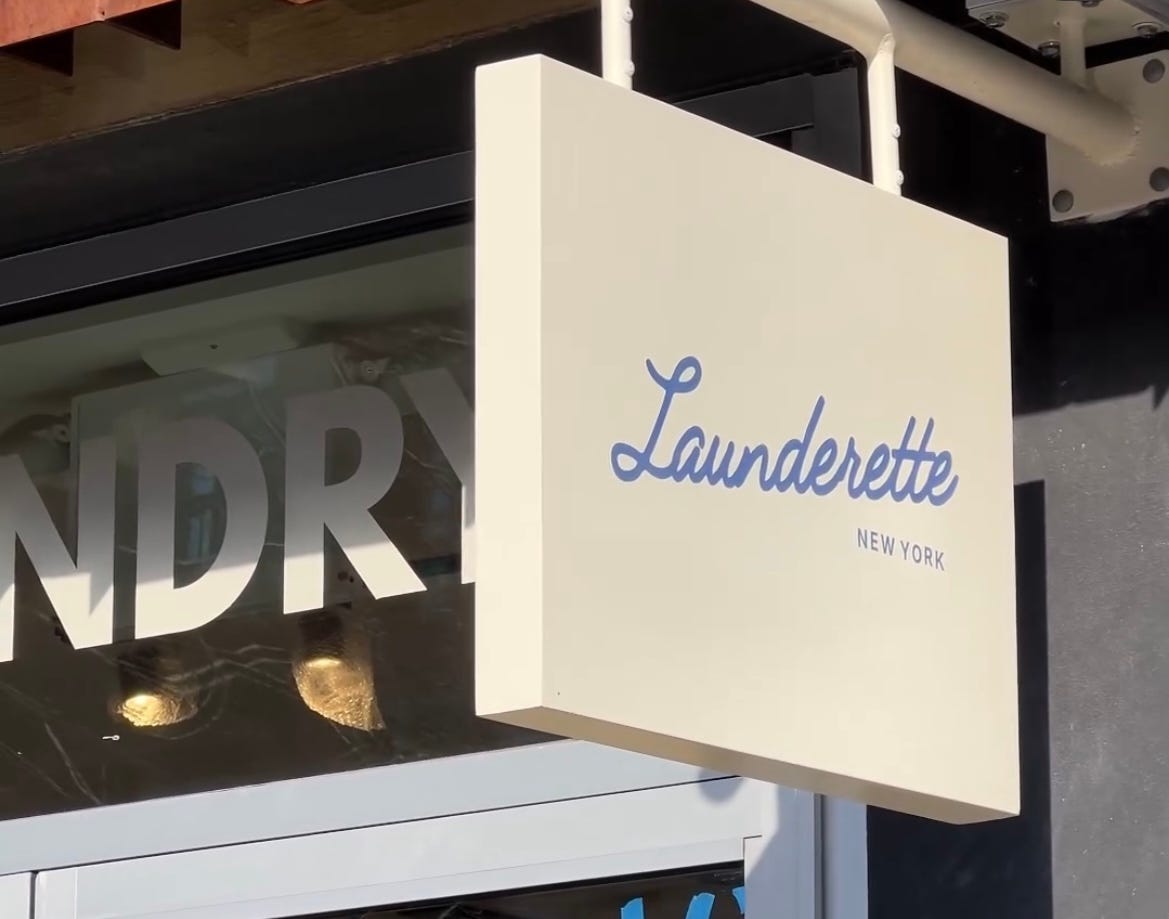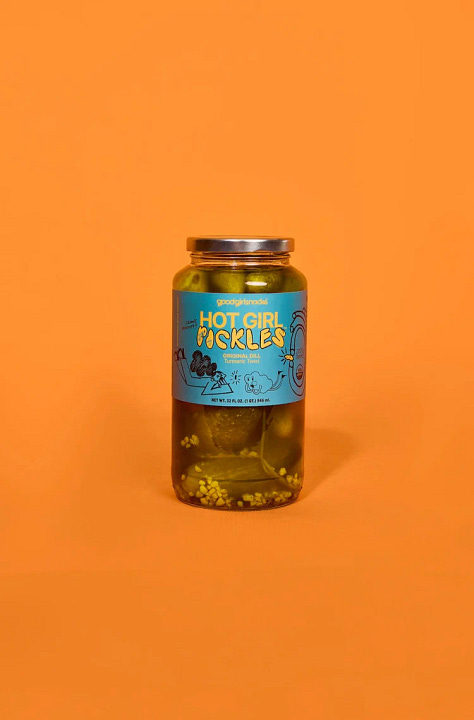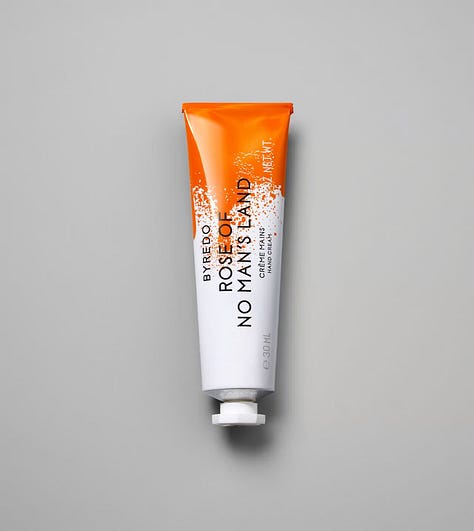Part 2: HIGH ON HOPE
What's that glowing in the dark?
TL;DR: Disruption creates monsters. But also: cultural progression. Right now people aren’t just coping. They’re hoping.

Last time we talked about cultural interregnums: times in-between times. When you have a feeling that things are no longer where they were, but not yet where they’re going.
Like what’s happening in fashion right now.
And in society more widely.
We talked about how those times are, historically, the times when the monsters come out. Seemingly from nowhere: “The old world is dying, and the new world struggles to be born: now is the time of monsters."
But looking only at the monsters tells an incomplete story.
Because these times-between-times are also times of possibility and hope.
History doesn’t just suggest this pattern, it screams it.
Not that smoothed-out everything-is-awesome optimism of the early digital era.
But a sharper, harder kind of hope. The kind that kicks down doors.
Personally I’m not interested in brands or people that are battening down the hatches, waiting for the storm to magically pass. I’m interested in the ones who are staring the monsters down.
Today let’s have a look at the other side of the coin: some of the green shoots of hope. This kind of hope:
"Hope is not a lottery ticket you clutch feeling lucky.
Hope is an axe you break down doors with in an emergency."
Rebecca Solnit - cultural critic, author, historian, activist
Desperate times, desperate measures
Cultural interregnums always seem to spit out wild leaps. Things that seem illogical, until they don’t.
Post-WWI cultural convulsion gave us jazz, Bauhaus, The New Look, Gabrielle Chanel. The ruins of WWII produced rock & roll, abstract expressionism, rage around inequality. Punk and hip-hop originally surfaced amid 1970s economic uncertainty and political upheaval.
What’s emerging now?
Deliberate hedonism
The Charli XCX BRAT movement we talked about last week? Lime-green sweaty euphoria? It’s so much more than mindless escapism. It’s deliberate, f-you, joy. Desperate resistance to the feelings our young people are forced to feel. It’s a very nuanced, very intelligent response, if you ask me. She’s high on hope.
Just like when the UK’s acid house scene exploded under late-stage Thatcherism - those illegal warehouse raves weren’t just parties, they were temporary autonomous republics. A place where you could breathe.
(if you haven’t seen this documentary about the movement, it’s well worth a watch - for its dream-like quality + story of idealism, community, and the biggest mass arrest in British post war history).
And so Charli’s clean sweep during recent awards season wasn’t just about musicality. I think she won for the axe-like hope she’s offering. People debated whether her opponents Dua’s or Taylor’s music was objectively better. But Charli’s message was sharper. Bolder. More right for the times.
We’re seeing wider echoes of that '90s rave culture energy all over the place right now (despite venue closures and punitive licensing) - coffee shop day raves, daybreaks, and digital blackspot parties (let’s call them speakeasies).
Not anomalies. Laboratories.
Like AJ at
said in her send yesterday: “I'm seeing a lot of content lately of people saying "clubs are closing" and "no one is going out anymore". Still, I'm noticing raves happening in random/unique places such as chip shops and coffee shops——even the famed Katz's played host (which, love the vibe).”Glimmer culture



One of the most best (trauma?) responses to what’s going on right now, I think, is one of the smallest: glimmers.
Not escaping our reality through fantasy, but transforming our reality with tiny acts of magic that spark joy. Or just regulate our nervous systems. The opposite of a trigger.
What I’m trying to say is why would one settle for an ordinary pickle when there are Hot Girl Pickles? And domestic drudgery who? Dedcool pls, not Persil. And yes, I want my hands to smell expensive. Everything else is (did you see The Ordinary stepping in this week to help cover the cost of American folks’ out-of-control egg bills?).
Patina as a status symbol
Another quiet act of resistance I talk about all the time = rejecting capitalism’s hunger for the new by finding beauty in visible wear. The lived-in aesthetic. Broken-in culture. Visible mending. Day-two hair. Morning-after eyeliner. Well-trodden elegance. Deliberate imperfection as a middle finger to the churn of want-buy-discard-repeat.
Being a contradiction is cool
Have you noticed a pushback against binary either/or thinking?
In fashion, our best designers are the ones that can thrive in contradiction. Loewe’s collections under JWA initially confused critics, but went on to spark wild devotion (and inspire vast swathes of other brands and designers). Daniel Lee at Burberry crafting a Britishness - through craft, casting and brand behaviour - that’s both reverent to the past and reflective of what life is really like in the UK right now. Raul Lopez at LUAR’s “subversive vision”, bridging downtown grunge and uptown polish. Maximilian Davis injecting Caribbean boldness into Ferragamo’s Italian heritage.
And the rest of us? Well we’ve talked about the rise of the cultural omnivore. They who glide between levels/subcultures of fashion, music, and food with a level fluency that is itself becoming the aspiration. The standard. They’re people who refuse to be easily categorised. Cultural omnivores really don’t want to be thought of as one-dimensional.
Parent power?
One of the most fraught cultural debates of our time is ofc smartphones and childhood. Amid the Adolescence conversation (the BBC’s reporting today that kids are asking teachers to screen it in their schools), this from Jon Haidt and Zach Rauch: Americans don’t agree about anything. Except this.
Talk about axe-like hope.
As ever, often the comments are just as interesting as the piece. “This feels like one of those rare cultural moments where momentum is finally on the side of courage…a powerful reminder that cultural change doesn’t begin with perfect legislation or top-down reform—it begins with conviction at the ground level.”
Power struggles
None of the stuff is just about creativity and aesthetic evolution. It’s also about a major realignment of cultural power. So big perhaps, it’s difficult to take in its true scale.
From gatekeepers to networks. From monoculture or tight, prescribed aesthetics (tradwife, rich mom, coastal grandmother…remember ‘starter pack’ culture?) to omnivorous expansive identities. From top-down to bottom-up social norm-shifting, maybe. From algorithmic drift to algorithmic resistance. From being told what we like by admen (then) and algorithms (now) to deciding for yourself.
In their book "New Power”, Timms & Heimans break this down very clearly:
Old power is like a currency: Held by few. Closed guarded. Leader-driven.
New power is like a current of water or electricity: Made by many. Open to all. Peer-driven. Liable to surge.
And it is surging. Look at journalists leaving established legacy media for Substack. Or strategists, creative directors and designers leaving established creative agencies to set up their own practices. Actually, look at the whole concept of the modern portfolio career.
This isn't a minor adjustment. It isn’t megalomania. It's structural revolution.
The farsighted ones have been jumping ship and building their own rafts.
What do these (and many other) acts of axe-like hope have in common?
Stubborn insistence on creating positivity, perhaps against the odds.
Refusing to give in or look away from things you think are monstrous.
Embracing friction in a world obsessed with removing it.
So is hope a discipline, then? A daily practise? Like gratitude? Or yoga?
I don’t know, but some of the most interesting people and brands aren’t engineering out friction, they’re systematically engineering it in (The Row’s no-photos policy, Telfar’s limited drops, Cawley Studios’ waitlists, Rachel Tashjian Wise’s Opulent Tips invitation-only newsletter).
Where’s your bright green field?
What does this mean for fashion? For culture? For you and me?
Well if you work in around the fashion system, I think you’re at an advantage. Fashion has always been about the future - sensing shifts before they happen and imagining what’s going to be interesting next. Fashion has always been good at moving on from what’s over/no longer serving, and at building energy around what’s emerging. Designing next season, now. It’s what fashion people do. And that skill’s never been more crucial.
Same goes for brand people, marketing people. It’s our job to imagine the future. That’s why I’m so obsessed with trying to find clarity in the now. Often, as you know, by looking back in time for clues and reassurance. It helps me imagine what might be next (my agency is literally called Tomorrowism).
Right now, more often than not, that means spotting the bright green fields among the messiness and the ruins.
Where’s your bright green field?
Thanks for reading/see you next time.
Beth
This piece is part of an ongoing series. Subscribe below to catch them all.





once again, everything checks out.
thanks girl keep it coming
As always, I love reading your insights, they feel like a “bright green field” moment, that rare space of clarity and hope in the midst of chaos. Your perspective is sharp yet grounded, and the way you connect ideas with such generosity is truly inspiring. Thanks keep it coming. Xx